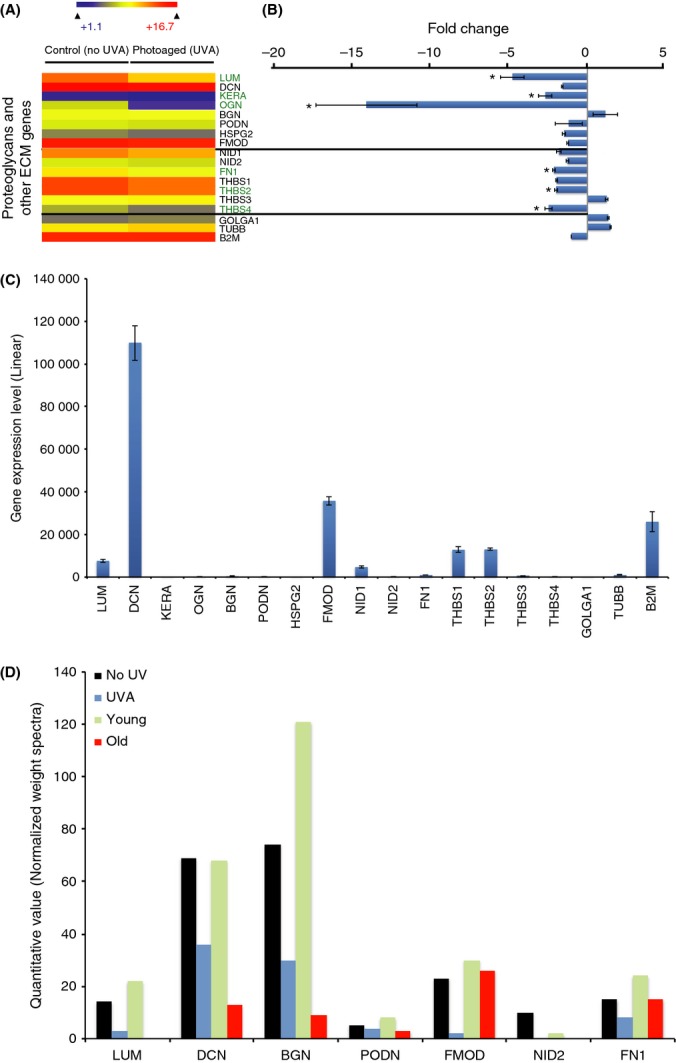Fig 5.

UVA-induced proteoglycans and other extracellular matrix (ECM) changes in human diploid corneal keratocytes. (A) Heatmap depicting the relative expression of proteoglycans and other ECM-coding genes in photoaged and control diploid corneal stroma keratocytes. The top eight genes (above the top horizontal line) code for proteoglycans, the middle seven genes (between the two horizontal lines) code for other ECM, and the bottom three genes are housekeeping genes used as controls. The significant deregulated genes (>2-fold positively or negatively) between the two conditions are identified by an asterisk (*) (B) Graphical representation of proteoglycan and other ECM-coding gene expression differences between photoaged and control keratocytes. Three major proteoglycan-coding genes are significantly downregulated (more than 2×) by chronic UVA irradiation (i.e., lumican, keratocan, and mimecan). Among the proteoglycan-coding genes, mimecan is the most deregulated in photoaged cells, with a > 14-fold decrease. Among the other ECM-coding genes, three are significantly downregulated by the UVA irradiation, that is, fibronectin I, thrombospondin 2 and 4. None of the proteoglycans and other ECM genes were upregulated by UVA irradiation. (C) Linear expression level of proteoglycan and other ECM-coding genes in unirradiated control keratocytes. Decorin showed the highest expression level. Among the UVA-induced dysregulated genes, lumican showed the highest expression level. (D) Graphical representation of the mass spectrometry analysis depicting proteoglycan and other ECM protein levels in photoaged keratocytes (UVA), unirradiated controls (NoUV), and keratocytes from 6-day-old (Young) and 87-year-old (Old) patients. The result shows a clear downregulation of all detected proteoglycans (lumican, decorin, biglycan, podocan, and fibromodulin) by both UVA irradiation and age. Among other ECM proteins, fibronectin, a temporary ECM component used in corneal wound healing to promote corneal epithelial cell adhesion and migration (Murakami et al., 1992; Kang et al., 1999; Tanaka et al., 1999), is downregulated by both UVA irradiation and age. The presence of fibronectin is an indication that our tissue-engineered stromas are not completely mature (Lake et al., 2013).
